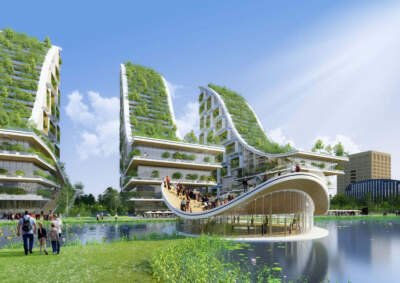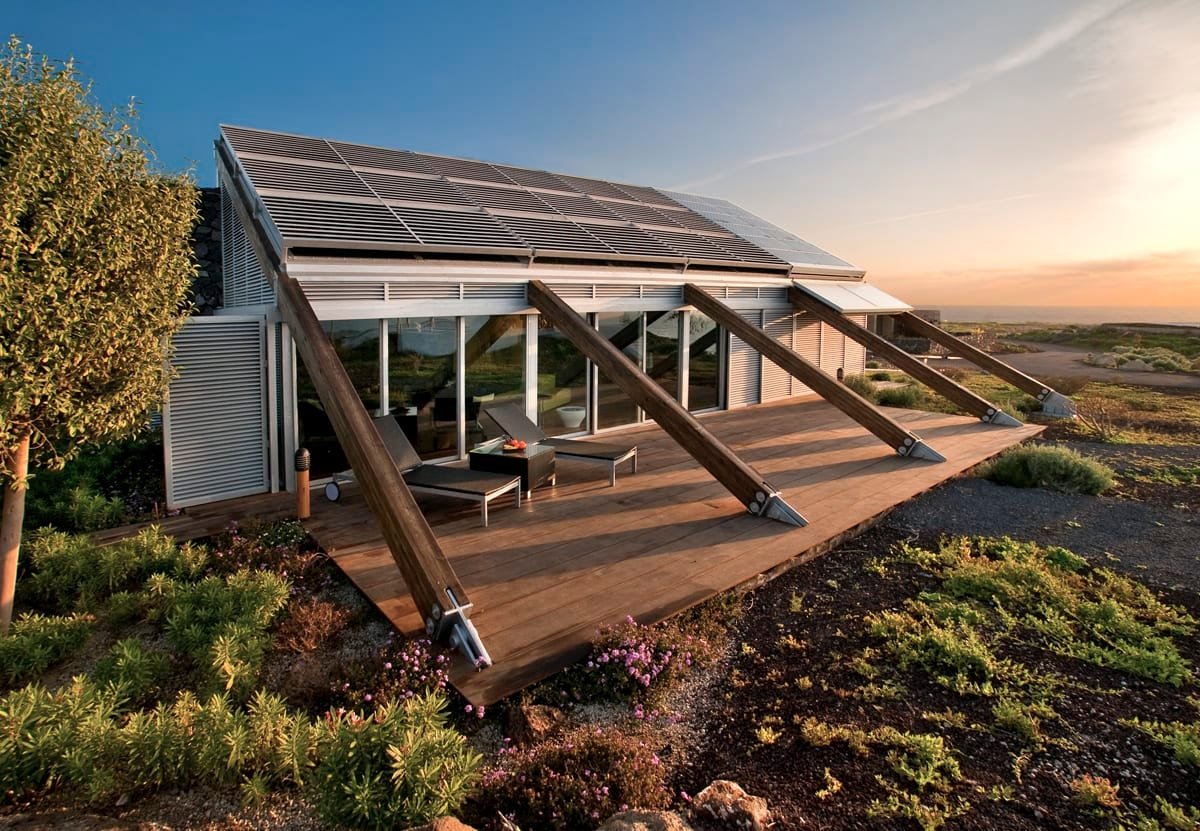Sustainable Architecture
“Exploring Sustainable Architecture: A Green Approach to Design and Construction”
Designing sustainable architecture, also known as green or environmental architecture, is a crucial endeavor that challenges architects to create intelligent designs and leverage available technologies. The primary goal is to minimize the harmful impacts of structures on both the ecosystem and the community. Saudi Design Group
The Global Impact of Sustainable Architecture: Greta Thunberg, the Swedish teenage climate activist, brought global attention to climate issues by embarking on a 15-day journey on a zero-emissions yacht. Her commitment highlighted the urgent need for sustainable practices in various fields, including architecture. Architects and designers have been actively working to develop designs that not only address climate change but also contribute to the well-being of residents and the environment.
Defining Sustainable Architectural Design: Sustainable architectural design is a comprehensive project aimed at enhancing residents’ health and comfort while reducing negative environmental impacts. This holistic approach spans from the initial design phase to construction and the selection of eco-friendly materials. But why is sustainable architecture necessary? It is essential for our vital well-being, especially in a world grappling with climate change, pollution, and resource depletion.
Examples of Sustainable Designs: Notable examples of sustainable design include the Shanghai Tower in China and the Bullet Center in Seattle. These structures incorporate solar panels, self-balancing water systems, and environmentally friendly materials, showcasing the principles of sustainability in action. Saudi Design Group
Foundations of Sustainable Design: The core principles
of sustainable building design are straightforward: minimize energy consumption, reduce water waste, and limit the use of harmful chemicals. By adhering to these principles, architects can create structures that endure over time and require fewer resources for construction.
Historical Roots of Sustainable Architecture: While the sustainable design movement gained momentum in the 1970s, the concept has historical roots dating back to the Crystal Palace in London (1850) and the Galleria Vittorio Emanuele II in Milan. These early structures employed innovative methods, such as underground cooling chambers, to regulate air temperature.
Evolution and Future Trends: The first Earth Day in 1970 marked the beginning of a sustainable design movement that has evolved with technology, reaching new heights in the 1990s. Today, sustainable architecture is undoubtedly the future, aligning with our collective responsibility to protect the environment.

Building a Sustainable Future in 2020 and Beyond: In the contemporary context, implementing sustainability into architectural projects is imperative for long-term well-being. Two key types of sustainable design—technological and passive—offer distinct approaches. Technological solutions focus on efficient technologies that save water and energy, while passive design integrates sustainability into the structural layout, reducing the need for additional energy consumption. Saudi Design Group
As we navigate the challenges of the 21st century, sustainable architecture stands as a beacon of hope and responsibility. By embracing green practices, architects contribute to a healthier and more sustainable future, ensuring the well-being of both current and future generations.
-
The Role of Individuals in Sustainable Architecture:
- Explore the role individuals play in adopting sustainable practices in their homes and communities.Sustainable Architecture
- Discuss the impact of conscious consumer choices on the demand for eco-friendly architectural designs and materials. Saudi Design Group
- Technological Advancements in Sustainable Architecture:
- Highlight recent technological innovations in sustainable architecture, such as smart building systems, energy-efficient appliances, and advanced construction materials.
- Emphasize how these technologies contribute to creating more environmentally friendly and energy-efficient structures.
- Global Initiatives and Certifications:
- Explore international initiatives and certifications promoting sustainable architecture, such as LEED (Leadership in Energy and Environmental Design) and BREEAM (Building Research Establishment Environmental Assessment Method).
- Discuss how these certifications influence architectural practices and contribute to global sustainability goals.
- Challenges and Solutions in Sustainable Architecture:
- Address challenges faced by architects and designers in implementing sustainable practices, such as cost constraints and regulatory barriers.
- Provide insights into innovative solutions and strategies to overcome these challenges, fostering wider adoption of sustainable architecture.

-
Sustainable Urban Planning:
- Examine the role of sustainable architecture in urban planning and city development.Sustainable Architecture
- Discuss how incorporating green spaces, efficient public transportation, and eco-friendly infrastructure contributes to creating sustainable and livable cities.
- Education and Awareness:
- Emphasize the importance of education and awareness in promoting sustainable architecture. Saudi Design Group
- Discuss initiatives and programs aimed at educating architects, builders, and the general public about the benefits and principles of sustainable design.
- Case Studies:
- Include more case studies of iconic sustainable buildings around the world, showcasing diverse architectural styles and approaches.
- Analyze the measurable positive impacts these structures have had on their surroundings and the environment.
- Future Trends and Innovations:
- Explore emerging trends and future innovations in sustainable architecture. Saudi Design Group
- Discuss concepts like circular economy principles, zero-carbon buildings, and the integration of renewable energy sources in architectural designs.
-
Community Engagement and Participation:
- Highlight the importance of involving local communities in the design and implementation of sustainable architecture projects.
- Discuss how community engagement contributes to the success and acceptance of such projects.
- Government Policies and Regulations:
- Examine the role of government policies and regulations in promoting sustainable architecture.
- Discuss incentives, subsidies, and regulations that encourage architects and builders to adopt green practices.

By incorporating these additional details, the article becomes more comprehensive, addressing various aspects of sustainable architecture and providing a well-rounded perspective on its importance and implementation.
Embark on a Design Journey with Saudi Design Group!
Elevate your hotel experience with Saudi Design Group, where our enchanting designs are meticulously crafted to inspire guests, encouraging them to extend their stay and create lasting memories.
Immerse yourself in a world of creativity and aesthetic allure that transforms spaces into captivating environments.
What sets Saudi Design Group apart?
Innovative Designs: Our designs go beyond aesthetics, incorporating innovation that sets your space apart.
Customer-Centric Approach: We prioritize your vision, ensuring a collaborative process that exceeds your expectations.
Tailored Solutions: Each project is unique, and our tailored solutions cater to the specific needs and ambiance you desire.
For more details and inquiries, connect with us:
Visit our Website: SaudiDesignGroup.com
Subscribe to our YouTube Channel
Follow us on Snapchat
Stay Connected on Facebook
Linkedin : https://www.linkedin.com/in/saudi-design-group-1a11b0288/
Twitter https://twitter.com/saudidesigngrp
Tiktok https://www.tiktok.com/@saudidesigngroup
Dear valued customer, instant assistance is just a message away! Reach us on WhatsApp at +966 507 945 715
or give us a call at +966 114 222 473.
Immerse yourself in the realm of interior design, exploring the impactful influence of colors.
Read more about….

